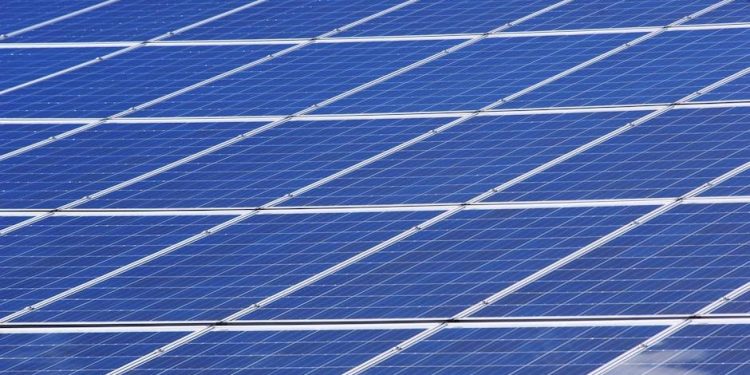In the ever-evolving landscape of renewable energy, solar power stands as a beacon of promise, illuminating pathways to a sustainable future. Yet, within the solar sector, a quiet debate simmers beneath the surface: Is there too much focus on utility-scale solar projects at the expense of their residential counterparts? As vast solar farms stretch across deserts and fields, capturing the sun’s energy on an industrial scale, rooftops in neighborhoods across the globe await their turn in the spotlight. This article delves into the dynamics of this solar conundrum, exploring the balance between grand-scale innovation and the empowering potential of home-based solar solutions. As we examine the merits and challenges of each approach, we aim to shed light on whether the solar industry’s gaze should be recalibrated to embrace both the monumental and the modest in its quest for a greener planet.
Balancing the Solar Scale: Utility vs. Residential
In the vibrant tapestry of solar energy, utility-scale projects often steal the spotlight, illuminating vast landscapes with sprawling arrays of photovoltaic panels. These colossal installations promise a significant reduction in carbon footprints and a boost to energy grids. However, their grandeur can overshadow the quieter yet equally crucial residential solar systems. Homeowners, by embracing solar technology, contribute to a decentralized energy revolution, fostering energy independence and resilience against grid failures.
- Utility-Scale Solar:
- High energy output
- Economies of scale
- Requires large land areas
- Residential Solar:
- Personal energy autonomy
- Localized energy production
- Potential for community solar projects
While the towering ambitions of utility projects captivate many, the grassroots potential of residential systems deserves equal attention. By nurturing both ends of the spectrum, we can achieve a harmonious energy balance, ensuring that solar power illuminates every corner of our communities.

Harnessing the Sun: Economic and Environmental Impacts
The global shift towards solar energy has sparked a significant debate: should our focus lean more towards utility-scale solar installations or residential solar systems? Utility-scale solar projects, with their vast arrays of panels, are often lauded for their ability to generate substantial power, which can be distributed widely and efficiently. This large-scale approach often benefits from economies of scale, resulting in a lower cost per watt and contributing significantly to reducing carbon emissions. However, the environmental impact of vast tracts of land being converted for solar farms cannot be ignored. It raises concerns about land use and the potential disruption of local ecosystems.
On the other hand, residential solar systems offer unique advantages that contribute both economically and environmentally. By empowering homeowners to generate their own electricity, these systems foster energy independence and can lead to significant savings on energy bills. Moreover, the installation of solar panels on existing structures minimizes additional land use and helps in reducing the carbon footprint of individual households. Yet, the initial cost and maintenance can be a deterrent for many potential users. As the solar industry continues to grow, it remains crucial to balance these two approaches, ensuring that both can coexist and complement each other to maximize the benefits for our planet and economies.
Decentralizing Solar Power: Empowering Homeowners
In the race to harness the sun’s power, the spotlight often shines brightly on utility-scale solar farms. These sprawling installations promise vast energy outputs and contribute significantly to grid supply, yet they risk overshadowing the untapped potential lying dormant on rooftops across the nation. Embracing residential solar power offers a unique opportunity to decentralize energy production, empowering homeowners to become energy producers and fostering a more resilient and sustainable energy ecosystem.
Consider the numerous benefits of prioritizing home-based solar solutions:
- Energy Independence: Homeowners can reduce their reliance on external energy providers, shielding themselves from fluctuating utility rates.
- Environmental Impact: Smaller, localized systems minimize transmission losses and encourage the adoption of green technology.
- Economic Empowerment: With incentives and net metering, residential solar can become a financially viable option, boosting local economies.
- Community Resilience: A decentralized network of solar-powered homes can enhance grid stability and provide backup power during outages.
By shifting focus towards residential solar, we not only democratize energy production but also nurture a culture of sustainability at the grassroots level, making every sunny rooftop a beacon of change.

Policy Shifts: Encouraging Residential Solar Adoption
In the current energy landscape, policies have often favored large-scale solar projects, but a shift towards promoting residential solar adoption could yield significant benefits. While utility-scale solar can generate substantial amounts of power, residential solar systems offer unique advantages like decentralization and energy independence. By decentralizing energy production, residential solar can reduce the strain on power grids, enhance resilience against outages, and empower homeowners to contribute directly to renewable energy goals.
To catalyze this shift, governments and policymakers could implement a range of supportive measures. These may include:
- Incentives: Offering tax credits, rebates, or grants to lower the initial investment costs for homeowners.
- Regulatory Support: Simplifying permitting processes and removing bureaucratic hurdles.
- Educational Campaigns: Raising awareness about the long-term economic and environmental benefits of residential solar.
- Financing Options: Introducing low-interest loans or solar leasing programs to make solar installations more accessible.
By embracing these policy shifts, we can create a more balanced and sustainable energy future that empowers individuals and communities alike.
Closing Remarks
As the sun sets on our exploration of the solar energy landscape, we find ourselves standing at a crossroads, illuminated by the dual pathways of utility-scale and residential solar power. Each path offers its own unique promise, casting long shadows and bright prospects across the terrain of sustainable energy. The debate over focus is not just about scale; it’s about balance, innovation, and inclusivity.
perhaps the question isn’t whether there’s too much focus on one over the other, but how we can harness the strengths of both to light the way forward. As we continue to harness the sun’s abundant energy, let us strive for a future where solar power is accessible, equitable, and beneficial for all, regardless of scale. In this vast and vibrant solar tapestry, every panel, whether perched atop a rooftop or spread across a sun-drenched field, plays a crucial role in weaving a more sustainable tomorrow.

































